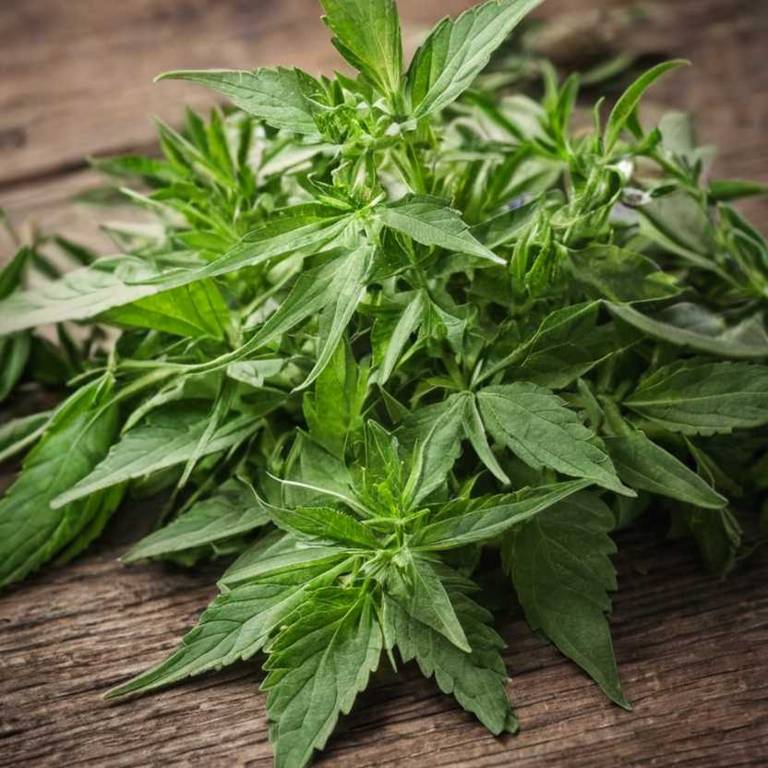By Leen Randell
Updated: Jul 06, 2024
What to know about Apocynum cannabinum (dogbane) before using it medicinally

Apocynum cannabinum, commonly known as dogbane, is a plant-based remedy that has been utilized for centuries to alleviate a variety of health ailments, including digestive issues, fever, and skin problems, due to its anti-inflammatory and antibacterial properties.
As a perennial herb, Apocynum cannabinum thrives in well-drained soil and full sun to partial shade, making it a relatively low-maintenance addition to any garden. Botanically, this herb is classified as a member of the Apocynaceae family and is characterized by its distinctive, milky latex that flows through its stem and leaves.
Historically, Apocynum cannabinum has been referenced in various traditional medicine practices, including those of the Native American and Chinese cultures.
This article explains the medicinal, horticultural, botanical, and historical aspects of Apocynum cannabinum.
What are the medicinal properties of Apocynum cannabinum?
Apocynum cannabinum helps with various ailments, including fever reduction, respiratory issues, and as an anti-inflammatory agent. It's also used topically for wounds, skin irritations, and to soothe burns. Traditional remedies have utilized it for centuries.
The active constituents, including apocynin, apocynoid, and cardiac glycosides, contribute to its medicinal properties. These compounds exhibit anti-inflammatory, antispasmodic, and antihemorrhagic effects. The plant's bioactive compounds also exhibit antioxidant and immunomodulatory activities.
The most commonly used parts for medicinal purposes are the leaves and roots. Leaves are typically harvested and dried for teas, tinctures, and infusions. Roots are also used in teas and are often combined with other plants for synergistic effects.
Improper use of Apocynum cannabinum can lead to side effects such as nausea, dizziness, and headaches. High doses or prolonged use may cause cardiac issues due to the plant's cardiac glycoside content. Allergic reactions to the plant are also possible.
Precautions include pregnant women avoiding the plant, as it may stimulate uterine contractions. Individuals with kidney or heart problems should consult a healthcare professional before using the plant medicinally. Patients taking other medications should monitor their condition closely, as interactions may occur.
What are the horticulural aspects of Apocynum cannabinum?
Apocynum cannabinum grow best in well-drained soil with a pH range of 6.0 to 8.0. Full sun to partial shade is required for optimal growth. This perennial plant tolerates drought but performs better with consistent moisture.
When planting dogbane, choose a location with minimal competition from other vegetation. Plant seedlings 12 to 18 inches apart, or directly sow seeds 1/4 inch deep in the spring after the last frost. Water regularly during the first growing season.
Dogbane can be harvested for its fibers, seeds, and medicinal properties. Cut the plant back to the ground after flowering, or harvest individual stems for fiber. Seeds can be collected in late summer or early fall. Roots can be harvested in the fall, after the plant has gone dormant.
Dogbane is susceptible to root rot caused by overwatering, as well as leaf spot and powdery mildew. Aphids, spider mites, and whiteflies may also infest the plant. Regular pruning and watering practices can help prevent these issues, but prompt treatment is necessary if symptoms persist.
What are the botanical aspects of Apocynum cannabinum?
Apocynum cannabinum is a perennial herbaceous plant that grows 1-4 feet tall, with erect or spreading stems, and simple, opposite, and ovate leaves that are 1-3 inches long and 0.5-1.5 inches wide.
Apocynum cannabinum belongs to the Apocynaceae family, with the scientific name Apocynum cannabinum, and the common name dogbane, which is derived from its milky latex sap. Its genus Apocynum includes 4-5 species of dogbane. Its family Apocynaceae includes 4,500 species of plants.
There are three variants of Apocynum cannabinum, including: Apocynum cannabinum var. cannabinum, Apocynum cannabinum var. floribundum, and Apocynum cannabinum var. schultesii, which differ in leaf shape, stem length, and flower arrangement.
Apocynum cannabinum is native to eastern and central North America, and its distribution range extends from Canada to the United States, and south to Mexico and the Gulf of Mexico. It grows in a variety of habitats, including forests, prairies, and along streams.
The life cycle of Apocynum cannabinum begins with the germination of seeds in early spring. The plant grows 6-8 inches tall by mid-spring, and produces flowers in late summer. The flowers are followed by seed production, which occurs in late summer and early fall. The seeds are dispersed by wind, water, or animals.
What are the historical aspects of Apocynum cannabinum?
Apocynum cannabinum is a plant with a long history of practical use. Indigenous peoples in North America used its fibers for rope, basketry, and textile production. In some regions, it was used as a medicinal plant for skin conditions and pain relief.
In some indigenous cultures, dogbane has mythological associations with spirits and ancestors. For example, in Ojibwe mythology, the plant is said to have been created by the Great Spirit to help the people. It was believed to possess spiritual power and protection.
Dogbane has been imbued with symbolic meanings across different cultures. In some cultures, it represents resilience and adaptability. Its ability to thrive in harsh environments has led to associations with themes of survival and perseverance.
The historical texts of dogbane are found in various sources, including the journals of early European explorers and colonial records. In 17th-century English literature, it was described as a "poisonous" plant that should be avoided. Other texts highlighted its potential as a textile and medicinal plant.
Archaeological evidence of dogbane use is found in the form of artifacts, such as woven baskets and textiles. Some of these artifacts have been carbon-dated to the 16th century. In addition, early European settlements in North America left behind written records of the plant's use as a source of income for indigenous peoples.